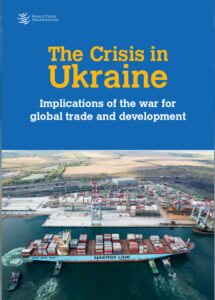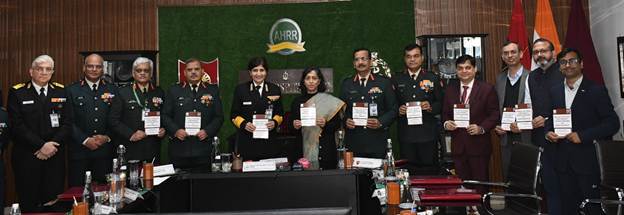
 Geneva: The war in Ukraine could lower global GDP growth by 0.7-1.3 percentage points, bringing growth to somewhere between 3.1 per cent and 3.7 per cent for 2022, the World Trade Organization Secretariat projected today using a global economic simulation model.
Geneva: The war in Ukraine could lower global GDP growth by 0.7-1.3 percentage points, bringing growth to somewhere between 3.1 per cent and 3.7 per cent for 2022, the World Trade Organization Secretariat projected today using a global economic simulation model.
In a note issued today, the WTO Secretariat analysed the impact of the crisis in Ukraine on global trade and development and further projected that global trade growth this year could be cut almost in half from the 4.7 per cent the WTO forecasted last October to between 2.4 per cent and 3 per cent.
It said the war has not only created a humanitarian crisis of immense proportions but has also dealt a severe blow to the global economy and circumstances.
While the shares of Russia and Ukraine in overall world trade and output are relatively small, they are important suppliers of essential products, notably food and energy. Both countries supplied around 25 per cent of wheat, 15 per cent of barley and 45 per cent of sunflower product exports in 2019. Russia alone accounted for 9.4 per cent of world trade in fuels, including a 20 per cent share in natural gas exports.
“Poorer countries are at high risk from the war since they tend to spend a larger fraction of their incomes on food compared to richer countries,” the WTO stated, adding that “This could impact political stability.”
Russia and Ukraine are also key providers of inputs into industrial value chains. Russia is one of the main suppliers globally of palladium and rhodium, key inputs in the production of catalytic converters for automobiles, supplying 26 per cent of the global import demand for palladium in 2019. Semiconductor production depends to a substantial extent on neon supplied by Ukraine. Disruptions in the supply of these inputs could hit car producers at a time when the industry is just recovering from a shortage of semiconductors, the note highlights.
Some regions will be more strongly affected by the war than others. Europe, the main destination for both Russian and Ukrainian exports, is likely to experience the brunt of the economic impact. Reduced shipments of grains and other foodstuffs will also boost the prices of agricultural goods, with negative consequences for food security in poorer regions.
Africa and the Middle East are the most vulnerable regions, as they import over 50 per cent of their cereal needs from Ukraine and/or Russia. In total, 35 countries in Africa import food and 22 import fertilizer from Ukraine, Russia or both. Some countries in Sub-Saharan Africa are facing the possibility of price hikes of up to 50-85 per cent for wheat as a result of the war’s impact on grain shipments from the region.
“The current crisis is likely to exacerbate international food insecurity at a time when food prices are already historically high due to the COVID-19 pandemic and other factors,” the Secretariat note warns.
One of the longer-term risks is that the war could trigger the disintegration of the global economy into separate blocs. Economic sanctions could cause major economies to move toward ‘decoupling’ based on geopolitical considerations, with the goal of achieving greater self-sufficiency in production and trade. Even if no formal blocs emerge, private actors might choose to minimize risk by reorienting supply chains.
The Secretariat note warns that the income losses from such a development “would be severe, especially for emerging and developing economies.” At a global level, it could reduce GDP in the long run by about 5 per cent, notably by restricting competition and stifling innovation. Importantly, the GDP decline could be more severe as the estimate considers only a limited set of the gains from trade that would be foregone.
“This highlights the importance of the rules-based multilateral trading system, not least because the WTO provides functions that can help to cushion the impact of the crisis,” the Secretariat note states. “Keeping markets open will be critical to ensure that economic opportunities remain open to all countries.”
– global bihari bureau





